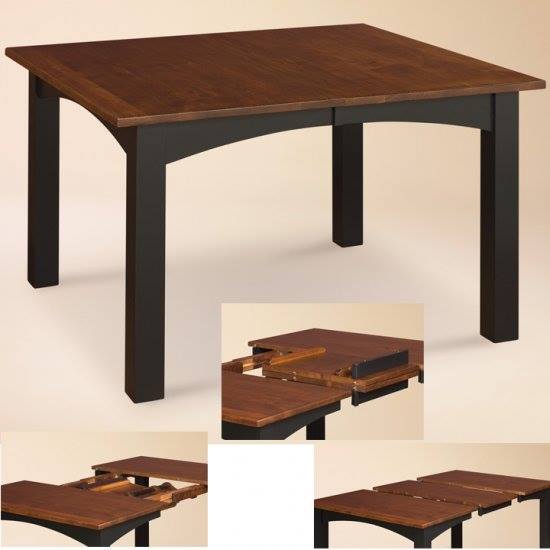There is always more to Amish furniture than meets the eye. Whether you’re talking about the expert craftsmanship, the high-quality stain, or the joinery, there is always something amazing to see, and the best Amish furniture can last a lifetime. Today we are going to take a quick look at the joints that hold Amish furniture together and delve into how it all works.
Dado Joints – The Staple of Amish Furniture
 A dado joint is simply a slot that is cut into a piece of wood, and from the cross-section, it has three sides. Dado’s joints are cut perpendicular to the grain and it has a few different types:
A dado joint is simply a slot that is cut into a piece of wood, and from the cross-section, it has three sides. Dado’s joints are cut perpendicular to the grain and it has a few different types:
Through Dado – Passes through the surface with ends remaining open
Stopped Dado – One or both ends stop before the edge of the surface.
Dados are used to connect shelves in most cases, so, for example, you could be using it to build a bookcase, or you might simply be building a pantry in your kitchen.
The Dovetail Joint
This is usually referred to simply as a ‘dovetail’, and it is a joint well known for its tensile strength. For this reason, you will usually find it in drawers or other pieces that will be under constant stress. The joint features a series of tails, each tail matching up to a slot. Once these are glued together, the joined is permanent and does not require any additional mechanical fastener. Its strength makes it a driving force in many pieces of Amish furniture for sale and will help to ensure that the furniture piece in question lasts for many years to come.
Finger Joints – A Popular but Weaker Joint
This is one of the most popular woodworking joints in the industry and it is much like a dovetail joint, but without the angling on the pins. Instead, the pins are square and do not have the same mechanical strength of their sister joint. This is not the most common joint in Amish furniture but it may be used in pieces that will not see a lot of stress – it all depends on the situation and the builder’s prerogative.
These are three common types of joints used in Amish furniture online and in pieces at any physical Amish furniture store. The omission of butt joints and other low-quality joinery methods have helped to ensure that Amish furniture will not only look great but will stand the test of time! If you want quality pieces for your home, and if you want something that you can pass down from generation to generation, then you’ve come to the right place, and you certainly have the right furniture. Look through our store and start planning your next renovation or remodel.

 (763)498-7730
(763)498-7730 Livechat
Livechat

